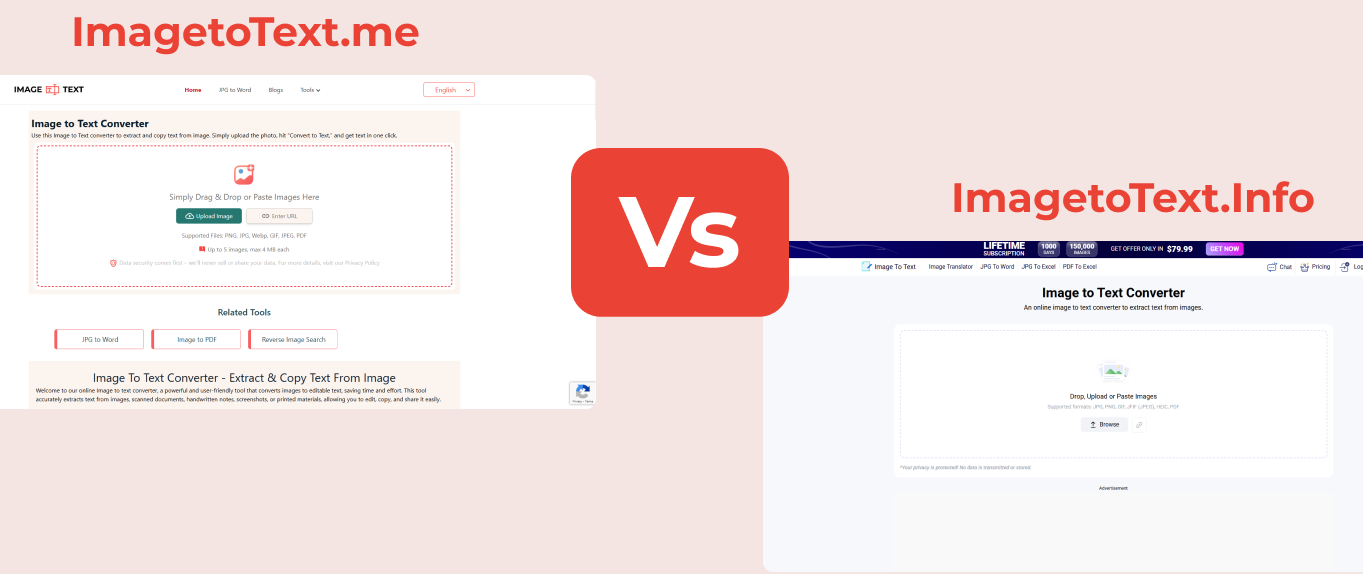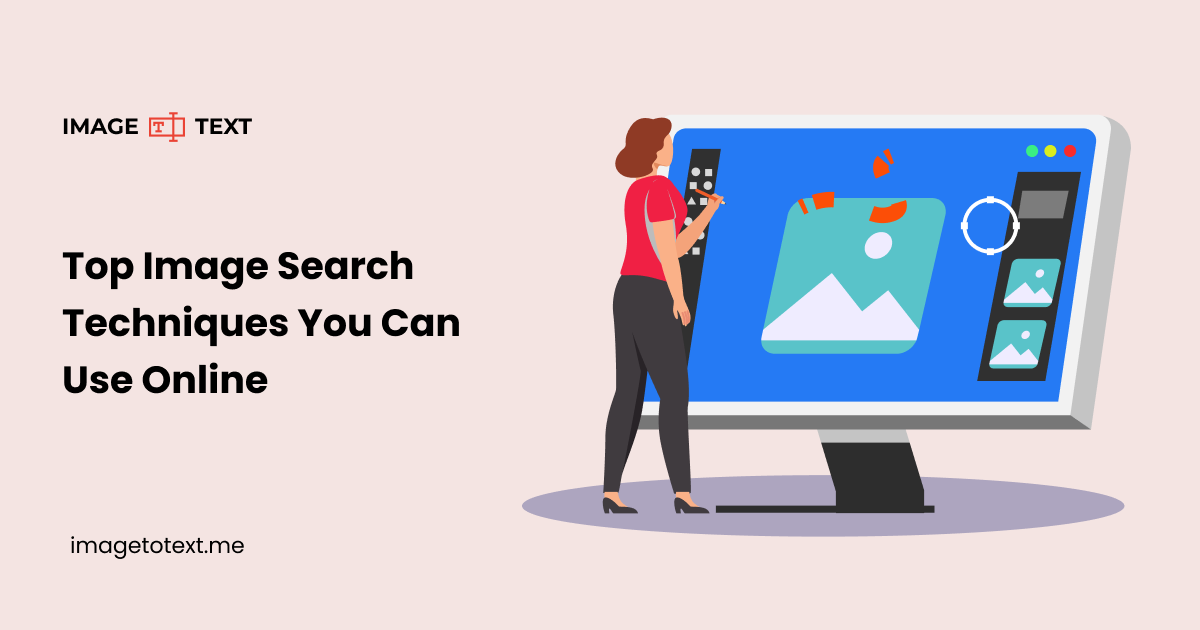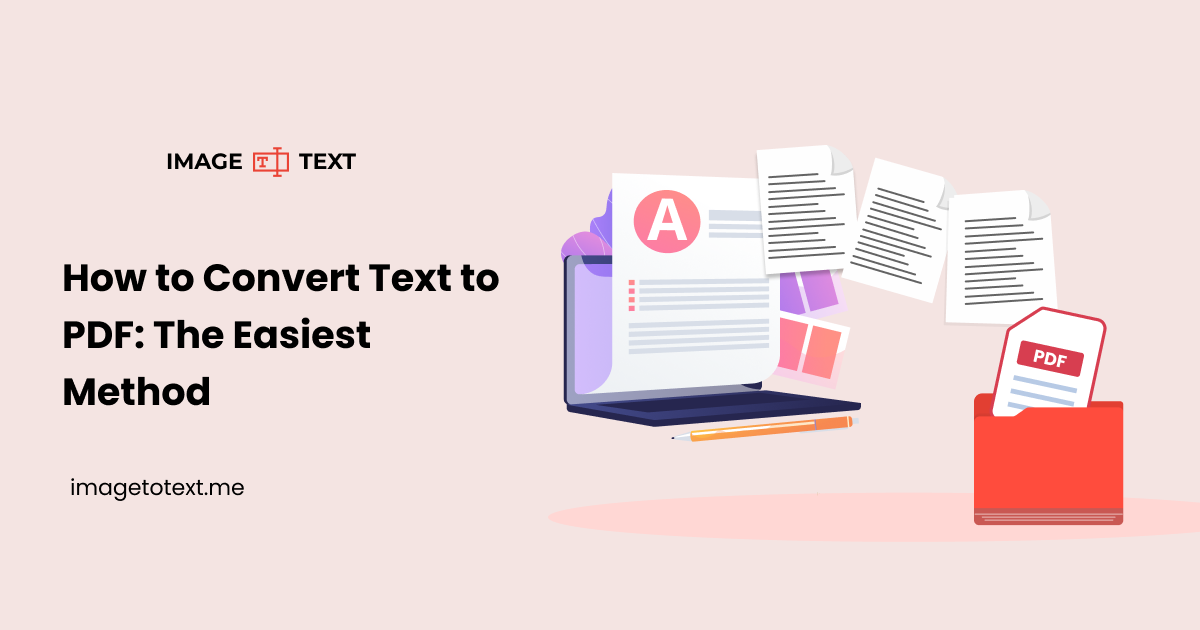3 Easy Techniques for Extracting Text From Images
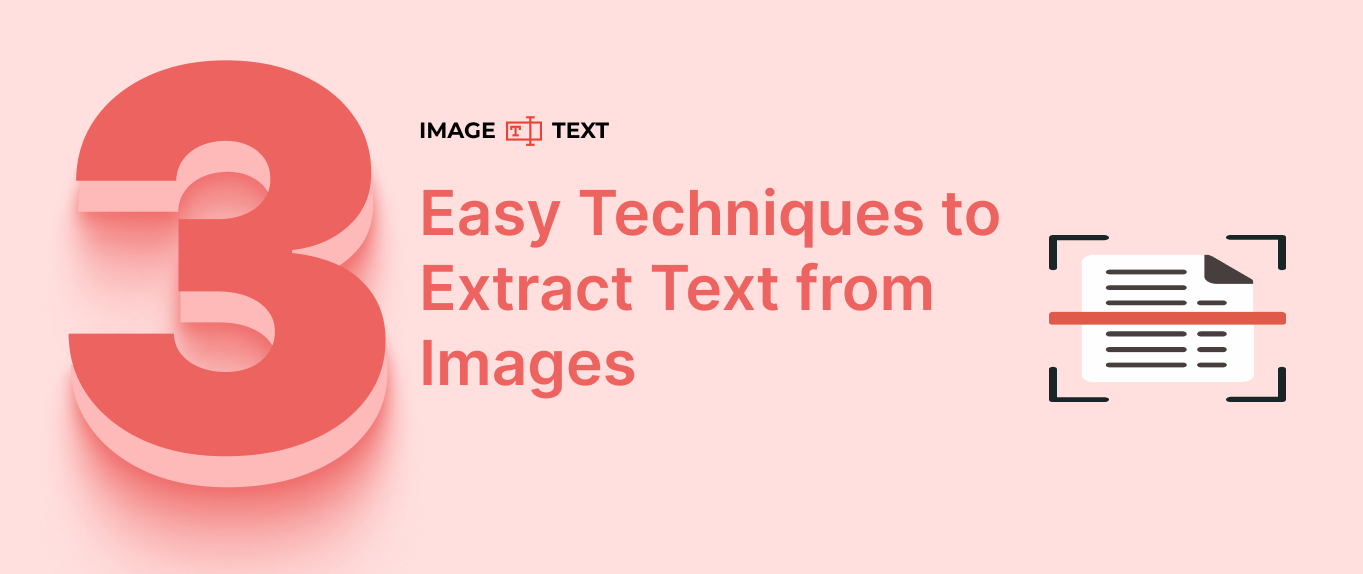
You may want to extract text from images for a number of different reasons. Data in images often has to be extracted for purposes such as data entry, data collection, and analysis, etc.
In this post, we’ll examine three easy techniques for extracting text from an image. We will cover methods suitable for both mobile and desktop users.
Understanding Image to Text Conversion and the Technology Behind it
However, before we get to that, we want to discuss the process of image-to-text conversion and the technology behind it.
Image-to-text extraction is the process by which software recognizes the text written inside an image file and then copies it into a digital, editable format.
This process is made possible thanks to a technology known as OCR. OCR stands for Optical Character Recognition. This technology uses a number of different steps to analyze and refine the target image before recognizing the text written inside it.
Now, let’s examine the different techniques you can use to perform this process.
Using Our Online Image to Text Tool
One of the easiest methods that you can use for extracting text from images is to use an online OCR tool, such as the one that we provide here at Imagetotext.me.
Using an online tool is an effective method because it doesn’t involve any sort of downloads or sign-ins. There are no delays or waits of any sort. You only need to load the tool, input your image, and get the extracted text.
Below, we’ll share the exact steps to use an online tool for text extraction. We’ll be talking about our tool in particular because we want to give you some exact, actionable steps that you can immediately follow.
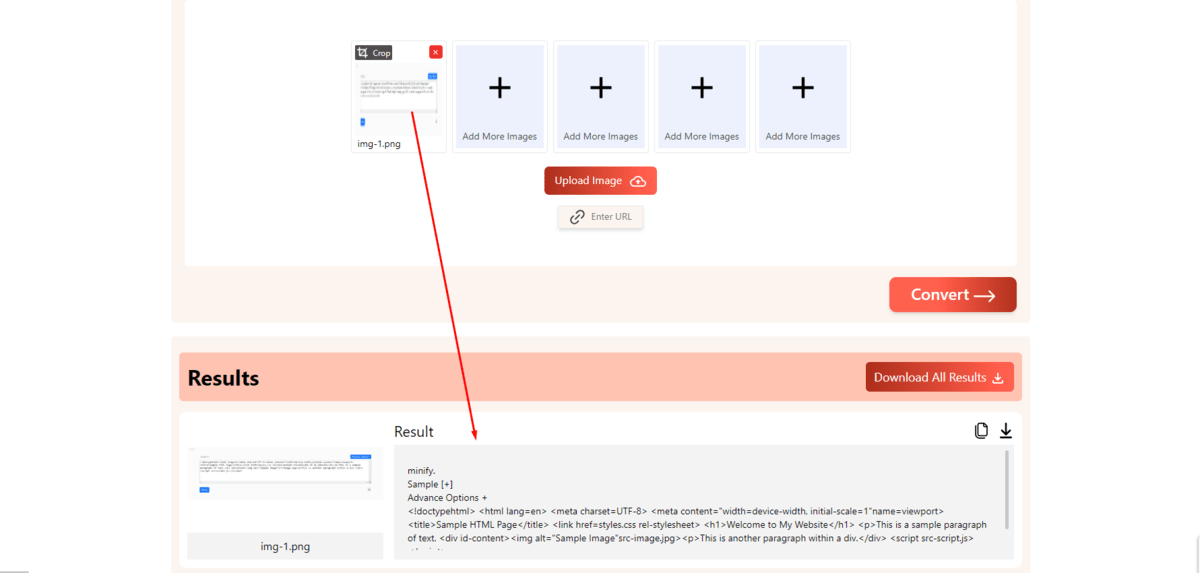
How to Use Imagetotext.me to Extract Text from an Image?
Here are the steps that you need to follow:
- First, enter your images into the tool. You have several options, such as directly uploading an image from your local storage, using a URL, or copying and pasting. (You can enter up to five different images at once.)
- Then, if you need to, you can crop the image or edit its orientation by clicking on the small “Crop” button.
- After you’re done with that, click on the “Convert” button. This will start the extraction process. The results for the image(s) will be provided below.
- You can copy the text to your clipboard or download it to your device in three different formats (Docx, PDF, and TXT).
These are the simple steps that you can follow to extract text from an image with the help of our online tool. If you want to use a different tool, you can go right ahead. The process is more or less the same in every tool. The basic steps are the same, such as entering the image, adjusting it, and then clicking on the button to start the process.
Benefits of Using an Online Tool to Perform Text Extraction
There are many benefits to using an online tool for this purpose, especially Imagetotext.me.
It is a quick and easy method to use: An online OCR tool is neither too difficult nor complicated to use. The interface of these tools is usually very simple and straightforward. You don’t have to worry about unnecessary delays or navigating through menus just to find the OCR function. Rather, you can get right into the process.
Multiple importing options: This is a benefit that you can enjoy, especially with our tool. This feature (of multiple importing options) is present in varying degrees in other online tools as well. Online OCR tools typically allow you to import your images from multiple sources, such as the internet (by using a URL) or from your local storage.
Available on all platforms: Another perk of using online OCR tools is that you don’t have to worry about having a particular platform. Rather, as long as you have a browser and a working internet connection, you can load an image-to-text tool. You could be a Windows user, a Mac user, or a Linux user—it doesn’t matter.
Using the Google Lens Mobile Application
Another method that you can use to extract text from images is to use a mobile application. In the world of OCR mobiles, perhaps the best and most reliable name is Google Lens.
Google Lens exists by default in all Android phones. The app is present by default, and you can simply search for it in the app drawer. However, if you are using an iPhone, you will have to download the full Google app.
The main purpose of Google Lens is not just to extract text from images. Rather, it helps people look up the text in their image or translate it quickly on the spot. However, you can take a limited advantage of this app and simply use it for text extraction. (Other than text-related tasks, Google Lens also performs a wide range of other functions, but we’re omitting their discussion here.)
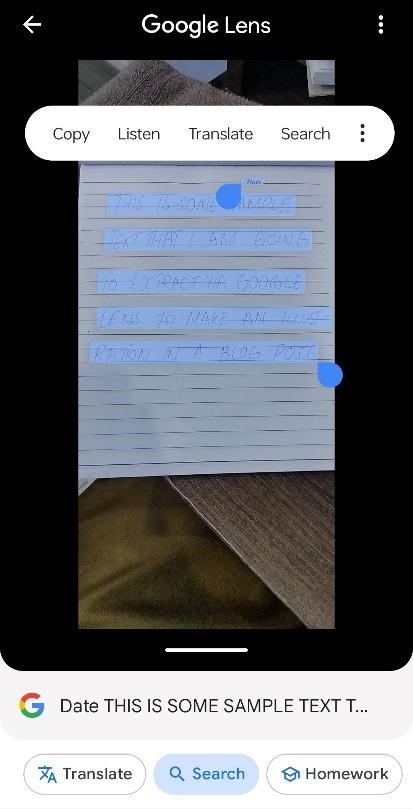
In the image above, you can see that once the text was selected, various options were provided, including “Copy.”
How to Use Google Lens for Text Extraction?
Here is what you need to do:
- First of all, open the Google Lens application on your phone.
- If you want to extract text from an already existing image, you can find it in your photo gallery.
- You can also take a picture on the spot by opening your camera.
- Once you have selected the image, the text inside it will automatically get selected. You can then tap and hold it and click on the “Copy” option to copy it to your clipboard.
Benefits of Using Google Lens for Text Extraction
Compared to an online tool, there are some downsides to using Google Lens as your method for text extraction. For example, if you want to use Google Lens on your iPhone, you first have to download the Google app (since it is not an Android device).
Nevertheless, Google Lens provides a range of benefits to compensate for these downsides. Here are some of them:
Works offline: With Google Lens, you can translate texts into images even when you’re not connected to the internet. Since the app recognizes the text for translation purposes, you can select and copy it. That way, you can make limited use of the OCR function of the app for text extraction.
Allows you to snap images instantly: Another good feature of Google Lens is that it allows you to take pictures while inside the app. In other words, if there is a document in physical form that you want to change to digital text, you can take a picture of it using the camera feature of Google Lens and then instantly extract text from it.
Using ChatGPT-4o
A more modern yet effective method for extracting text from images is to use ChatGPT.
When ChatGPT first came out, it was using the GPT-3 and GPT-3.5 models. These models were wholly text-based and did not perform image analysis.
With GPT-4, however, image analysis became a possibility for ChatGPT. Recently, in May, the GPT-4 model was released for ChatGPT, and it was made freely available to all users, albeit for a limited number of uses.
Since it is available in a limited capacity to everyone, you can use it to extract text from images. You could, of course, buy ChatGPT’s paid version and enjoy the newer model as much as you want, but since the other methods in this guide are free, we want to restrict this discussion to free availability as well.
How to Use ChatGPT to Extract Text from Images?
Here is what you have to do:
- Open up ChatGPT
- If you are not on a paid plan, make sure that you still have the free uses of GPT-4o left.
- Copy the image from which you want to extract text and paste it into the message box.
- Give ChatGPT the command to simply “Extract Text” from the image
- Copy the extracted text
Our convert picture to text tool can also be very useful for researchers and data analysts. The tool can be used if there is information stored as text inside an image that has to be extracted for research and data collection. This can make the entire process quick and efficient.
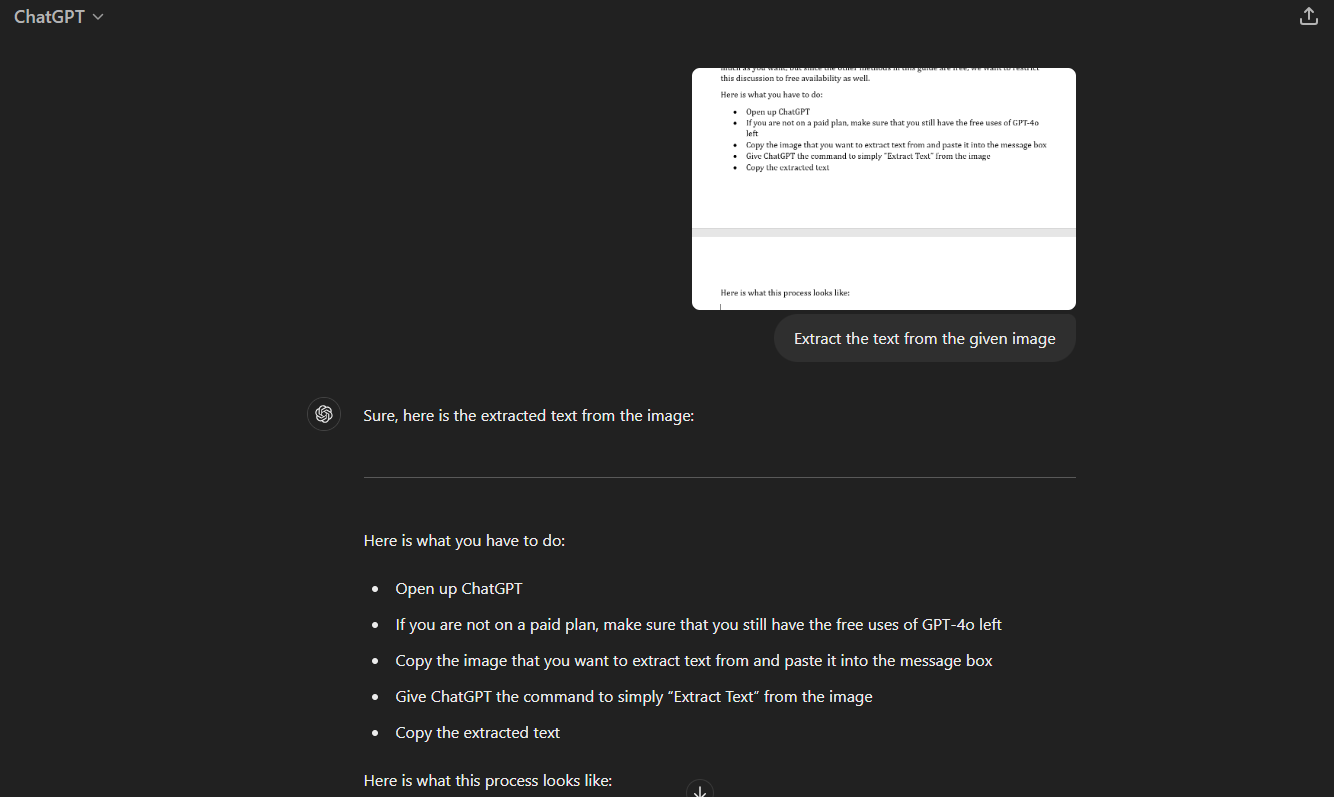
Benefits of Using ChatGPT for Text Extraction
There are many different benefits of using ChatGPT for extracting text from images. Here are some of the main ones:
Give custom instructions: You can provide customized instructions to ChatGPT about how you want the text to be extracted. For example, we wanted to have some text extracted from an image but only a specific paragraph. We gave ChatGPT this exact instruction, and it was able to perform the task just as we needed. This is a huge benefit of using this tool.
Enjoy a conversational text extraction process: Since ChatGPT is an AI assistant, the process of extracting text from images is conversational and interactive. If there is any part of the text that has not been accurately extracted, you can tell ChatGPT to correct it. You can also ask ChatGPT to explain the text to you if needed.
Perform functions on the extracted text: The AI assistant has a lot of capabilities when it comes to editing and improving text. For example, after it extracts the text, you can tell ChatGPT to capitalize all the letters, rephrase the sentences, correct the grammar, and much more.
Tips for Effective Text Extraction
We have mentioned three different methods for extracting text from images. However, to ensure that the extraction is accurate, you should take different steps and measures.
Make Sure That the Images Are in the Right Position and Orientation
This is an important step to ensure that the extracted text is provided accurately. It is easy to do in online tools like Imagetotext.me because they provide image editing options within the tool.
If your image is not in the correct orientation and position, i.e., askew or sideways, the text will not be accurately extracted. Correcting any such problem is necessary. If you are using ChatGPT or Google Lens, you will have to use a photo editor to fix the position/orientation since they don’t provide these editing features themselves.
Make Sure That the Images Are Not Blurred or Hazy
Nowadays, AI-assisted image-to-text tools can analyze and extract text even from hazy and blurry images. Our tool, Imagetotext.me, is a prime example of this.
However, if you use clear images, you can ensure that the text is extracted accurately and does not contain any errors.
Make Sure That You Select and crop the Required Area from the Image (if needed)
If you are extracting text from a large image or from an image that contains a lot of different text and symbols, make sure that you crop it. You may think that it is a lesser hassle to delete the excess text afterwards.
However, if you don’t crop the image, it’s possible that the unwanted content may interfere with the overall process, and the actual required text could be inaccurately extracted.
Conclusion
The three techniques we mentioned above allow you to easily extract text from your images. Text extraction has various uses, such as data entry, data analysis, and so forth.
The three methods we’ve mentioned above include using an online tool, Google Lens, or ChatGPT. From all of these methods, we recommend that you use an online tool. With an online tool, there are many different features that you can enjoy, such as making adjustments to the image, uploading files from your local storage, downloading text to your device, and more.
